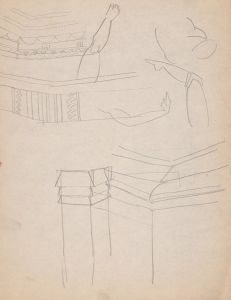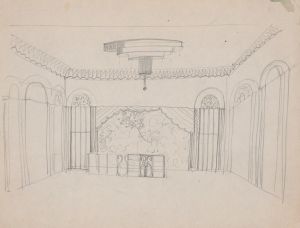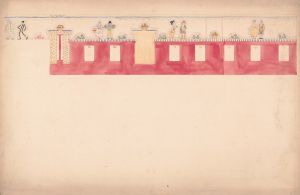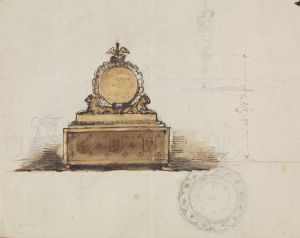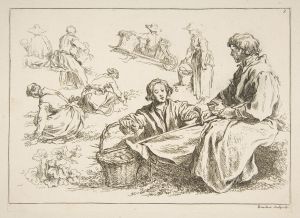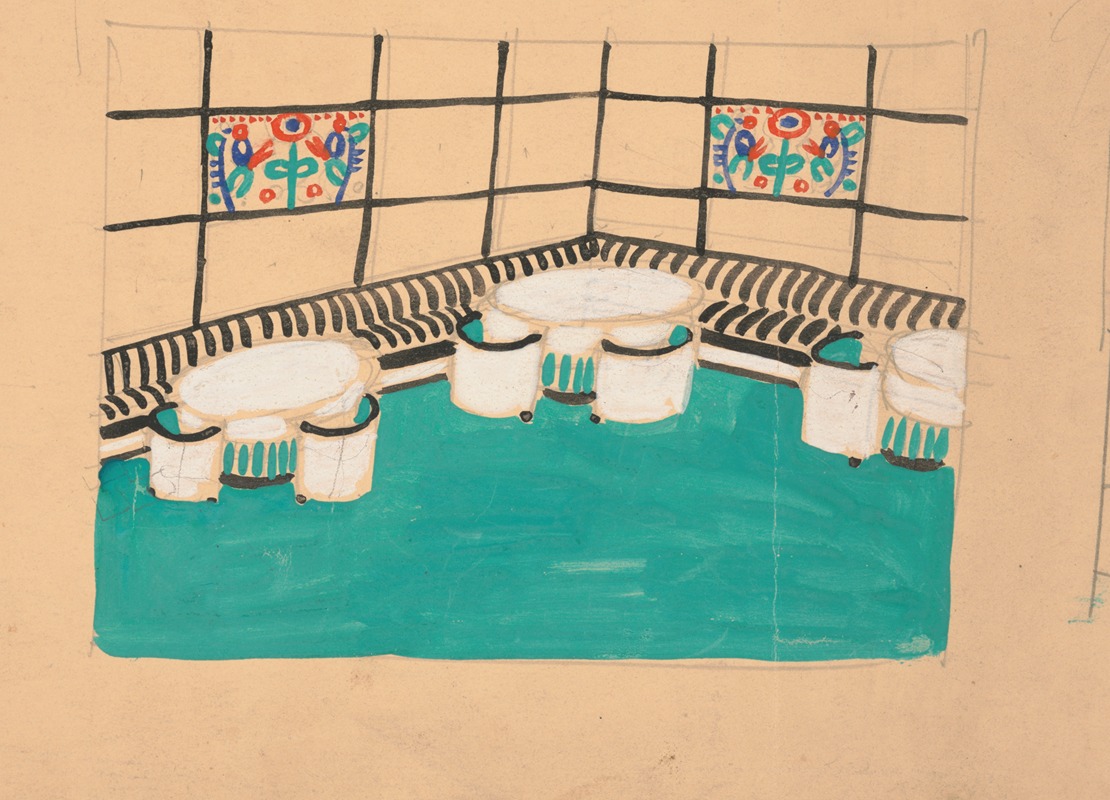
Interior perspective studies for Restaurant Crillon, 15 East 48th Street, New York, NY.] [Interior perspective study
A hand-painted replica of Winold Reiss’s masterpiece Interior perspective studies for Restaurant Crillon, 15 East 48th Street, New York, NY.] [Interior perspective study, meticulously crafted by professional artists to capture the true essence of the original. Each piece is created with museum-quality canvas and rare mineral pigments, carefully painted by experienced artists with delicate brushstrokes and rich, layered colors to perfectly recreate the texture of the original artwork. Unlike machine-printed reproductions, this hand-painted version brings the painting to life, infused with the artist’s emotions and skill in every stroke. Whether for personal collection or home decoration, it instantly elevates the artistic atmosphere of any space.
Winold Reiss (1886–1953) was a German-American artist and designer known for his work in interior design, portraiture, and graphic arts. Among his notable contributions to design and architecture are his interior perspective studies, which often showcased his modernist approach and attention to detail. One such work is the "Interior perspective studies for Restaurant Crillon, 15 East 48th Street, New York, NY." This piece is an example of Reiss's skill in creating visually compelling and functional interior designs.
The Restaurant Crillon was located at 15 East 48th Street in New York City, a bustling area in Midtown Manhattan. During the early to mid-20th century, this neighborhood was a hub for cultural and social activity, and establishments like the Restaurant Crillon catered to a clientele seeking refined dining experiences. Winold Reiss was commissioned to create designs for the restaurant, and his interior perspective studies reflect his ability to blend artistic vision with practical design elements.
Reiss's work on the Restaurant Crillon likely incorporated his signature style, which often combined bold geometric patterns, vibrant colors, and a modernist aesthetic. His designs were influenced by his European training and his exposure to American culture after immigrating to the United States in 1913. Reiss was particularly known for his ability to integrate diverse cultural motifs into his work, though specific details about the motifs or themes used in the Restaurant Crillon design are not documented.
The interior perspective study for the restaurant demonstrates Reiss's meticulous approach to spatial planning and his ability to visualize how a space would function and appear once completed. Such studies were essential tools for communicating design concepts to clients and collaborators, ensuring that the final execution aligned with the original vision.
While the exact date of the commission and the completion of the Restaurant Crillon project is not specified, it is known that Reiss was active in New York City during the 1920s and 1930s, a period when he worked on several high-profile interior design projects. His contributions to design during this era helped shape the visual identity of many public and private spaces in the city.
Unfortunately, detailed records about the Restaurant Crillon itself, including its history and eventual fate, are scarce. Similarly, there is limited information about the specific elements of Reiss's design for the restaurant beyond the surviving perspective studies. These studies, however, remain a testament to his artistic talent and his role in the development of modern interior design in the United States.
Winold Reiss's work continues to be celebrated for its innovative approach and its ability to bridge art and design. His interior perspective studies for the Restaurant Crillon stand as an example of his enduring legacy in the field of design.





![Design drawings for the Theodore Weicker Apartment Building.] [Study for metalwork gate](/imgs/249281/s/winold-reiss-design-drawings-for-the-theodore-weicker-apartment-building-study-for-metalwork-gate-8a05d5e9.jpg)
![Design for dčor of restaurant, 56 East 56th St, New York, NY.] [Drawing of suggested dčor for restaurant with color elevation and murals](/imgs/249282/s/winold-reiss-design-for-dcor-of-restaurant-56-east-56th-st-new-york-ny-drawing-of-suggested-dcor-for-restaurant-with-color-elevation-and-murals-29535340.jpg)
![Designs for the Puck Theater , New York, NY.] [Exterior perspective study](/imgs/249327/s/winold-reiss-designs-for-the-puck-theater-new-york-ny-exterior-perspective-study-df16fd5a.jpg)
![Designs for unidentified restaurant or bar interiors.] [Color study of bar, showing elevations with turquoise and vermillion decorations with tropical theme, no. 1](/imgs/249335/s/winold-reiss-designs-for-unidentified-restaurant-or-bar-interiors-color-study-of-bar-showing-elevations-with-turquoise-and-vermillion-decorations-with-tropical-theme-no-1-cec5c0ed.jpg)
![Drawings for proposed decorations of Mike Lyman’s Restaurant, 424 W. Sixth St., Los Angeles, CA.] [Playroom bar partial elevation, color design sketch with mural](/imgs/249340/s/winold-reiss-drawings-for-proposed-decorations-of-mike-lymans-restaurant-424-w-sixth-st-los-angeles-ca-playroom-bar-partial-elevation-color-design-sketch-with-mural-110bebc4.jpg)
![Proposed decorations for Fisher Building, Detroit.] [Theatre foyer 109 & adjacent galleries](/imgs/249387/s/winold-reiss-proposed-decorations-for-fisher-building-detroit-theatre-foyer-109-adjacent-galleries-88035d64.jpg)
![Designs for restaurant and bar interiors with curving bars and stairways.] [Sketches for bars and restaurants](/imgs/249417/s/winold-reiss-designs-for-restaurant-and-bar-interiors-with-curving-bars-and-stairways-sketches-for-bars-and-restaurants-195836c8.jpg)
![Designs for theater with black-framed proscenium and boldly colored settings.] [Study for stage light wall decoration, possibly for Caf ̌Crillon ..](/imgs/249418/s/winold-reiss-designs-for-theater-with-blackframed-proscenium-and-boldly-colored-settings-study-for-stage-light-wall-decoration-possibly-for-caf-crillon--5ac7a006.jpg)
